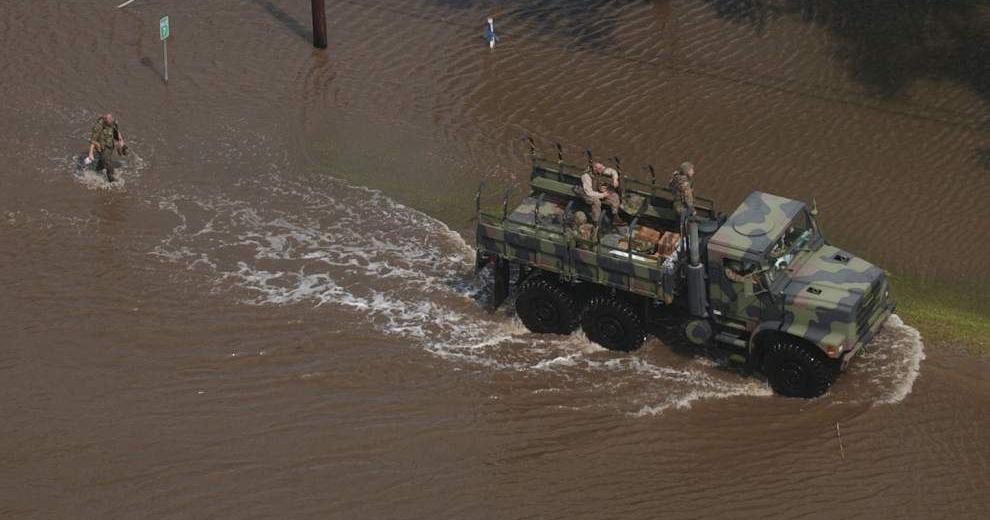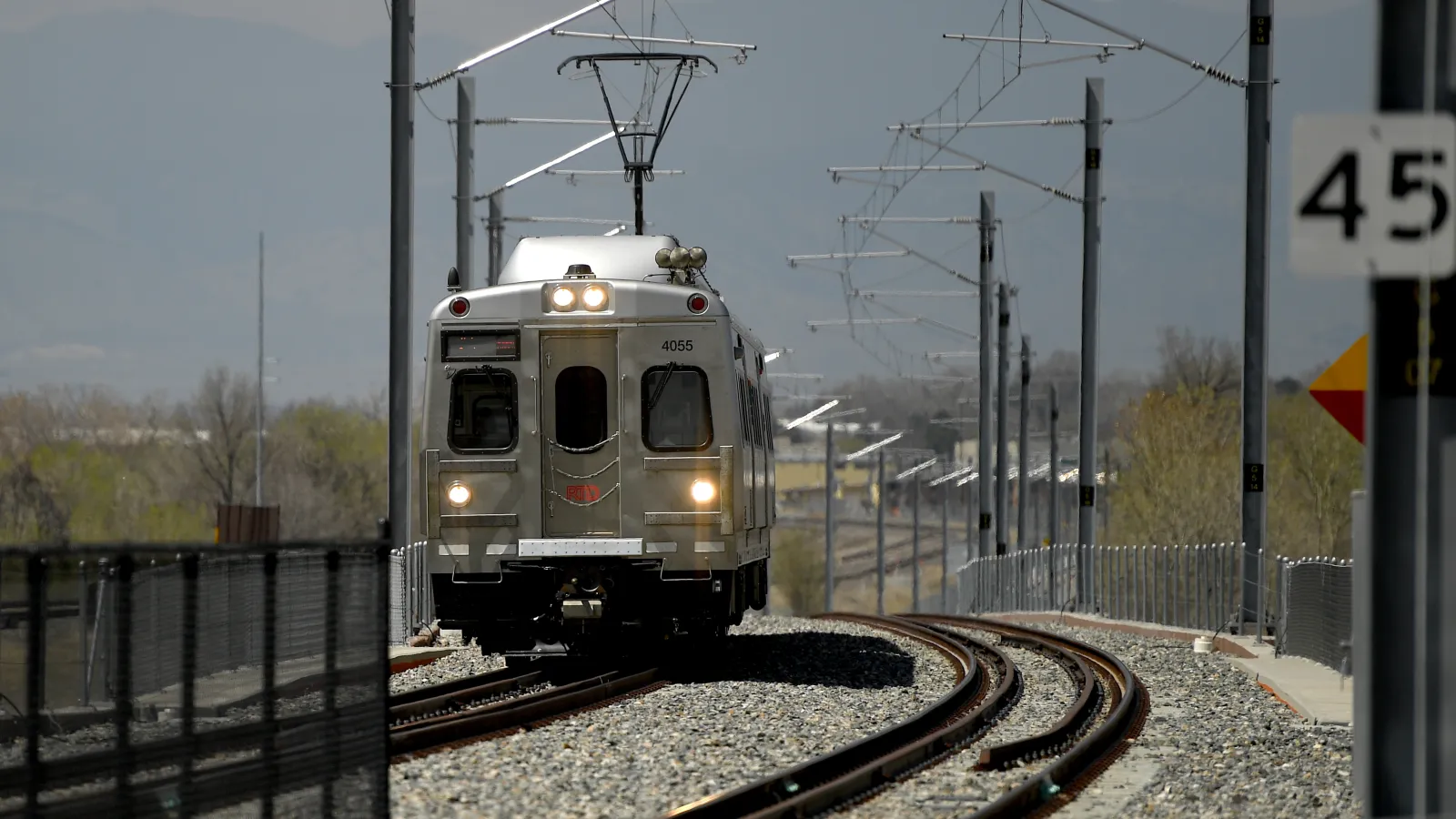
Hurricane Rita’s landfall launched an exodus from Cameron Parish. In the years after the storm’s Sept. 24, 2005, landfall, people, businesses, and resources all began to move away from the southwest Louisiana coastal community.
Before Hurricane Rita, Cameron Parish hadn’t seen a major storm since Hurricane Audrey in 1957.
Ross Conner, a 15-year-old Grand Lake resident in 2005, said he remembers hearing stories about the damage from Hurricane Audrey, but that Hurricane Rita was worse than anyone could have ever imagined.
“We had evacuated so many times before for other hurricanes, and nothing ever happened; we didn’t really take it seriously,” Conner said. “It was very rushed, and we all packed for a couple of days, just to evacuate. We weren’t thinking grab everything you can, so we left a lot of stuff that maybe in hindsight we should have packed.”
When Hurricane Rita hit Cameron Parish, it was a Category 3 and caused up to 18 feet of storm surge that destroyed homes, businesses, roads and other infrastructure.
Tina Horn, who was the Cameron Parish administrator during Hurricane Rita, said that when she returned after evacuating, everything was different.
“We had to rebuild all our public buildings, schools, churches, everything,” Horn said. “It was just like coming home to a bomb exploding and a lot of areas, all you saw was little fragments of wood.”
People thought that, since it had been 48 years between hurricanes Rita and Audrey, it would be another 30 to 40 years before another storm hit, said Clifton Hebert, who became the director of the Cameron Parish Office of Homeland Security and Emergency Preparedness right after Hurricane Rita.
But three years later, Hurricane Ike hit and brought over 10 feet of storm surge.
“That was probably the final blow for residents moving back, because at that point, whatever residents had moved back, their structures, their travel trailers they were living in from FEMA, that all got washed away again,” Hebert said. “At that point, they were very strict in saying we are not putting anything federally funded in the flood zone, so you’re either going to have to put it somewhere up north or whatever. So, that forced people to just forfeit and move out.”
Now, Grand Lake High School is the only school in the parish with a football team and South Cameron High School graduated one student in 2025.
“Just being able to have typical community activities, or just like, regular stuff, like graduations, you don’t have enough people (in south Cameron Parish), so you can’t do it,” Conner said about how things have changed since he was a high school student in 2005.
Now 35, Conner, is one of the hundreds of residents who left the area, but he said that may have still been the case if the hurricanes hadn’t changed the area.
“I didn’t think I’d be a lifelong resident of Cameron Parish, even before the hurricane, but if there was any consideration that I would, (Hurricane Rita) solidified that,” Conner said.
Horn, like others with deep roots in Cameron Parish, rebuilt her home way off the ground and according to the new building codes.
“The thing about Cameron Parish, for me, is my family, the Theriots settled this ridge that I live on, and so I’ve got really deep roots here,” Horn said. “When you have deep roots, like I do for Cameron, it’s like a passion. I’ll get on this Chenier Perdue Road and it’s like all my troubles are gone. I’m home, and that means a lot.”
“I knew where I wanted to be, and I knew the struggles I was going to have to get back here. But I felt like I wouldn’t be happy anywhere else, and so you just have to know what you want and work for it.”
Horn said that some of the residents who planned to come back after Hurricane Rita changed their minds after Hurricane Ike.
“A lot of the people that were in this part of the parish moved north,” Horn said. “Some of them went to the Grand Lake area (and) Hackberry, but they’re still in the parish. But, a lot of them moved to places like Iowa, Longville, Ragley, those places.”
In addition to the struggles of rebuilding homes, meeting building codes and finding insurance, many modern conveniences — like gas stations and convenience stores —didn’t make their way to Cameron Parish after the more recent storms. Horn said she believes that’s a reason that has kept some people from moving back.
“We don’t even have a gas station, and there aren’t very many places to eat,” Horn said. “So, you pretty much go to Lake Charles once a week, and do what you need to do.”
But while the number of people living in Cameron Parish has shrunk in the two decades since Hurricane Rita, there is a new industry moving into the region.
Over the last 20 years, multiple new liquefied natural gas facilities have been built in Cameron Parish.
Monkey Island was previously a neighborhood in Cameron Parish that had a ferry running to and from it before Hurricane Rita. It became vacant after Rita, when no one was able to rebuild, but now Monkey Island LNG is coming to the site.
“My personal perspective on it is, you can’t make a hurricane happen on purpose, but it worked out very well in favor of, like, the LNG companies, because they get to really come in and do whatever they wanted,” Conner said.
However, even with all of the industry coming to Cameron Parish, the population isn’t rebounding with it as people commute to and from the plants and property buyouts continue in some areas.
“Everyone is selling all their property down there, the younger generation is saying, ‘We’re never going to go back. We can’t keep it up. We’re moving out,'” Hebert said. “I don’t know how a population is going to come back into lower Cameron Parish, not in the Cameron facility area, because they’ve purchased property from all around.”



